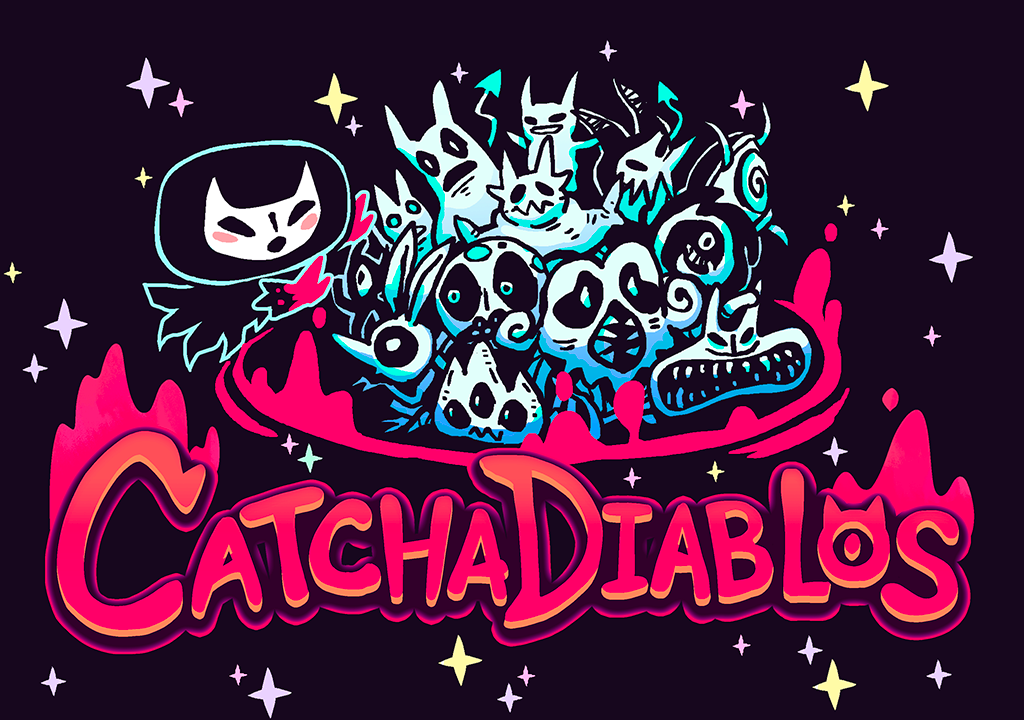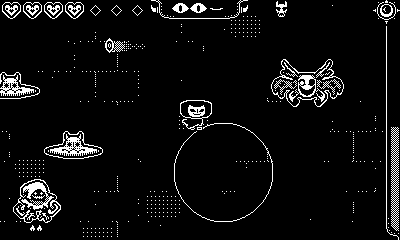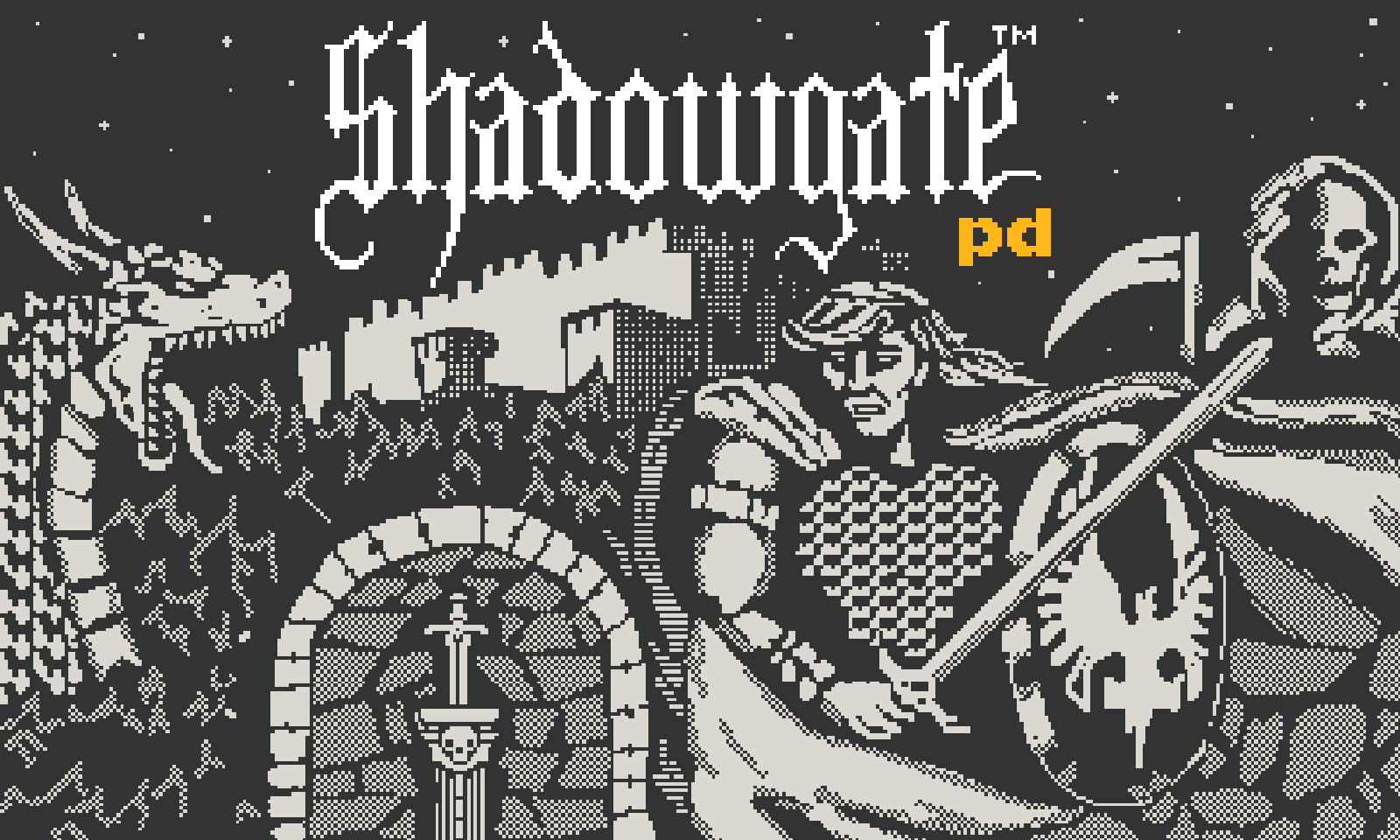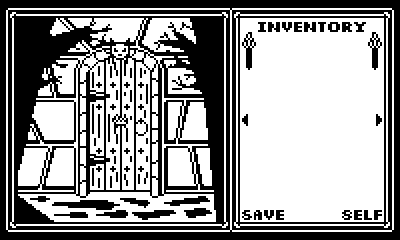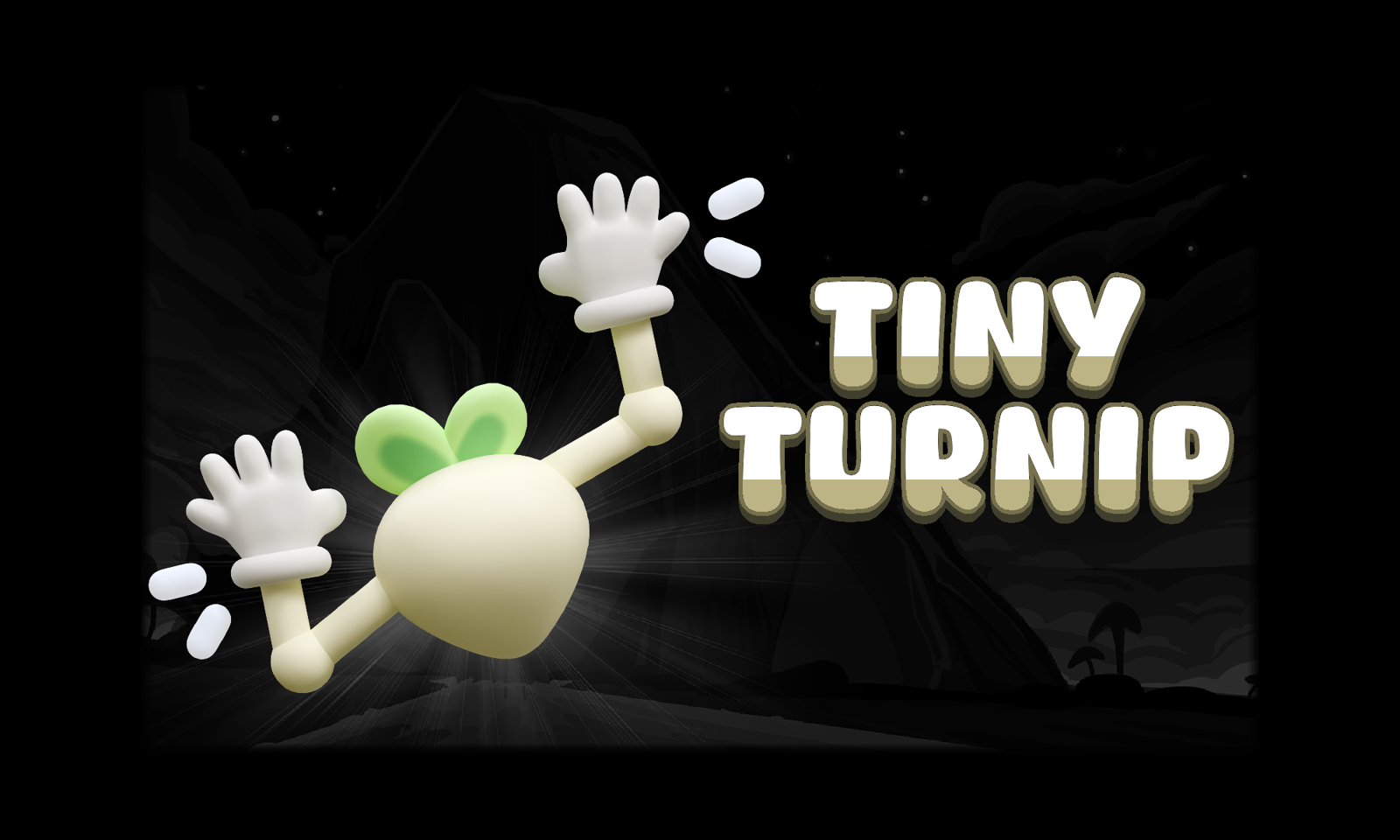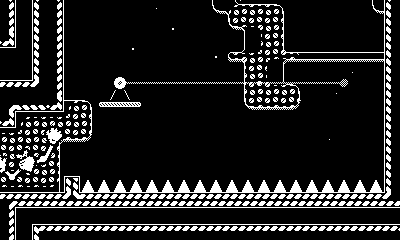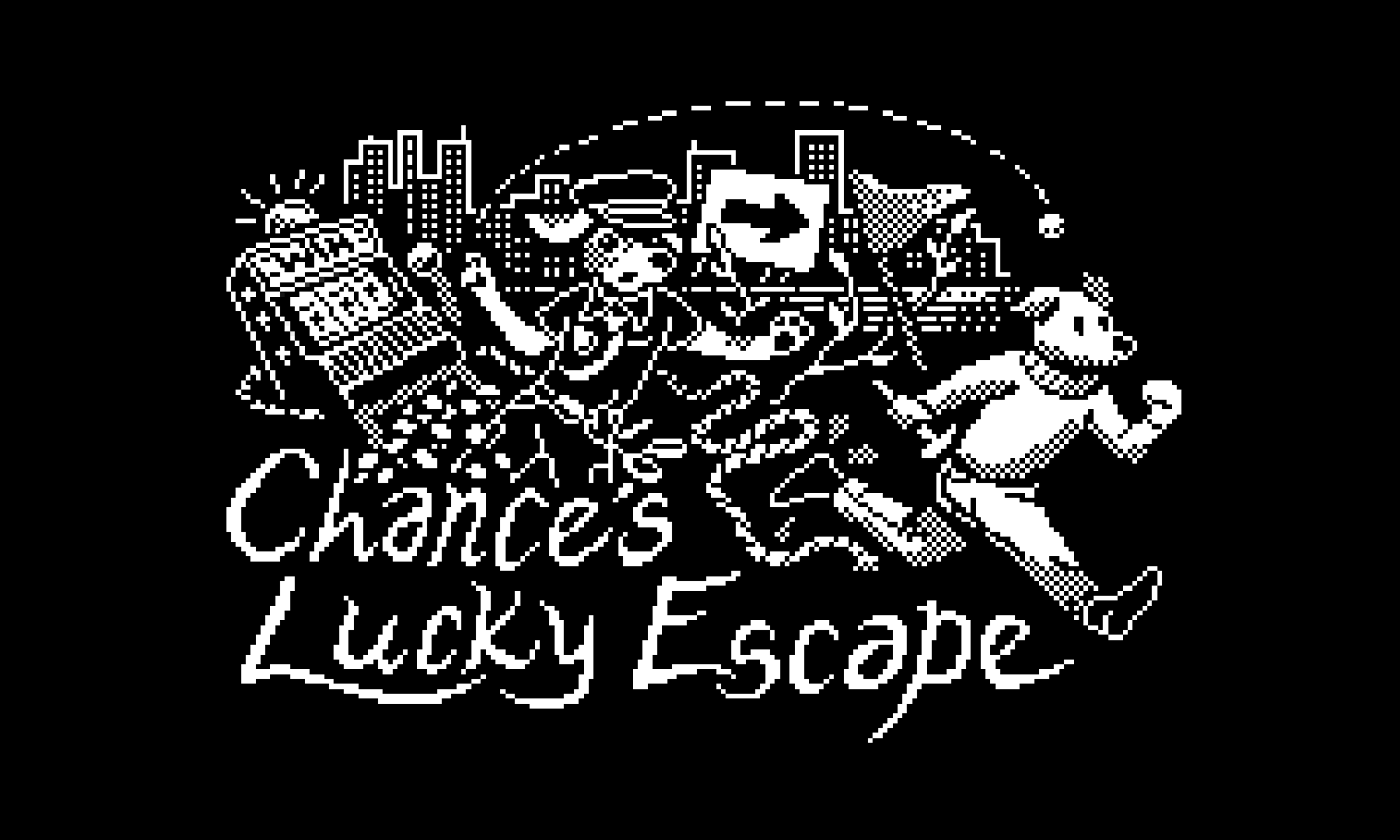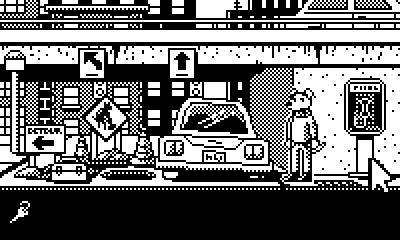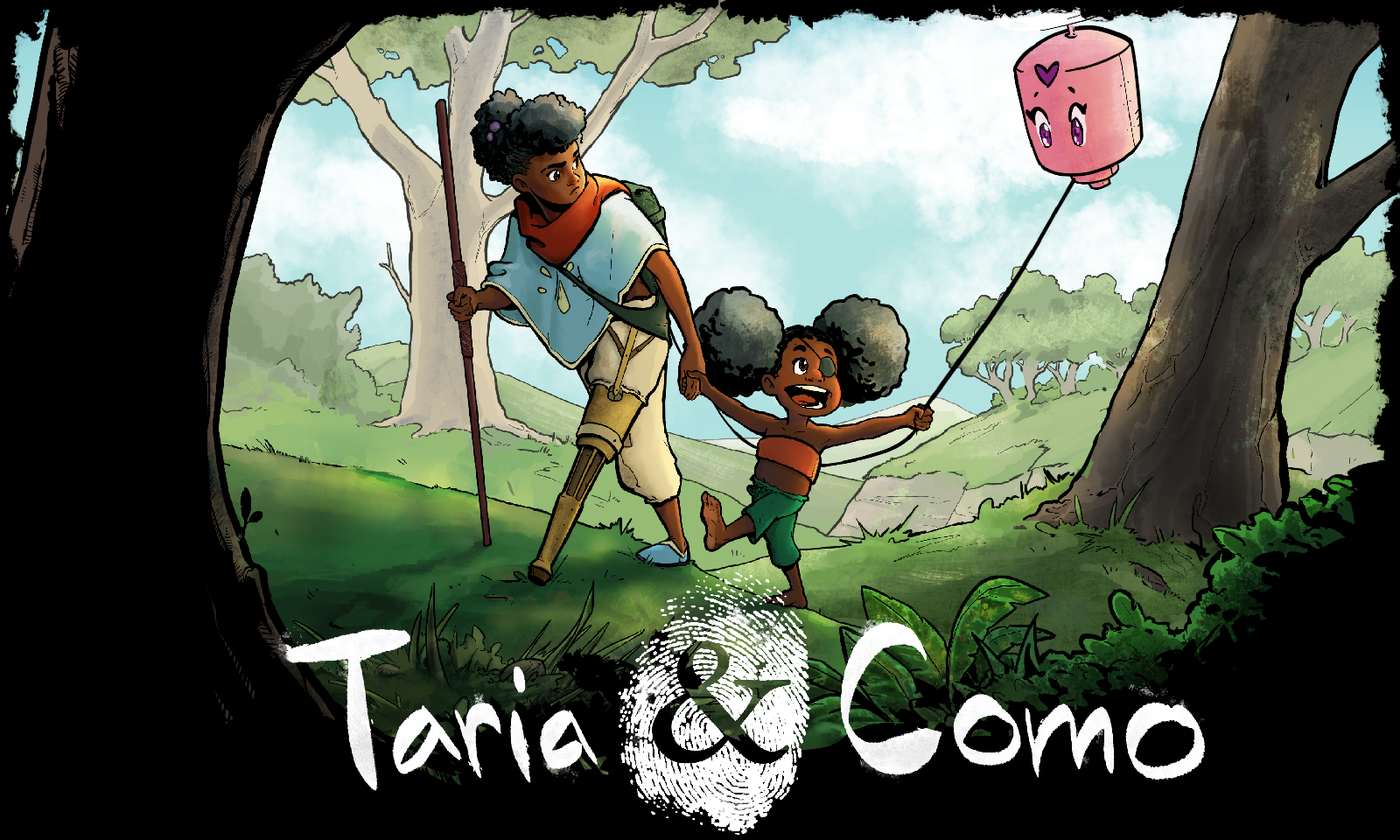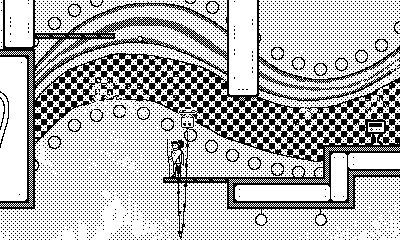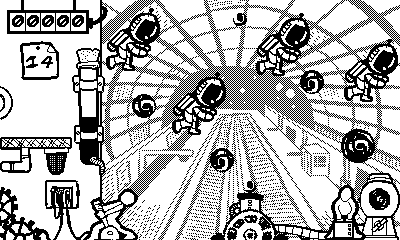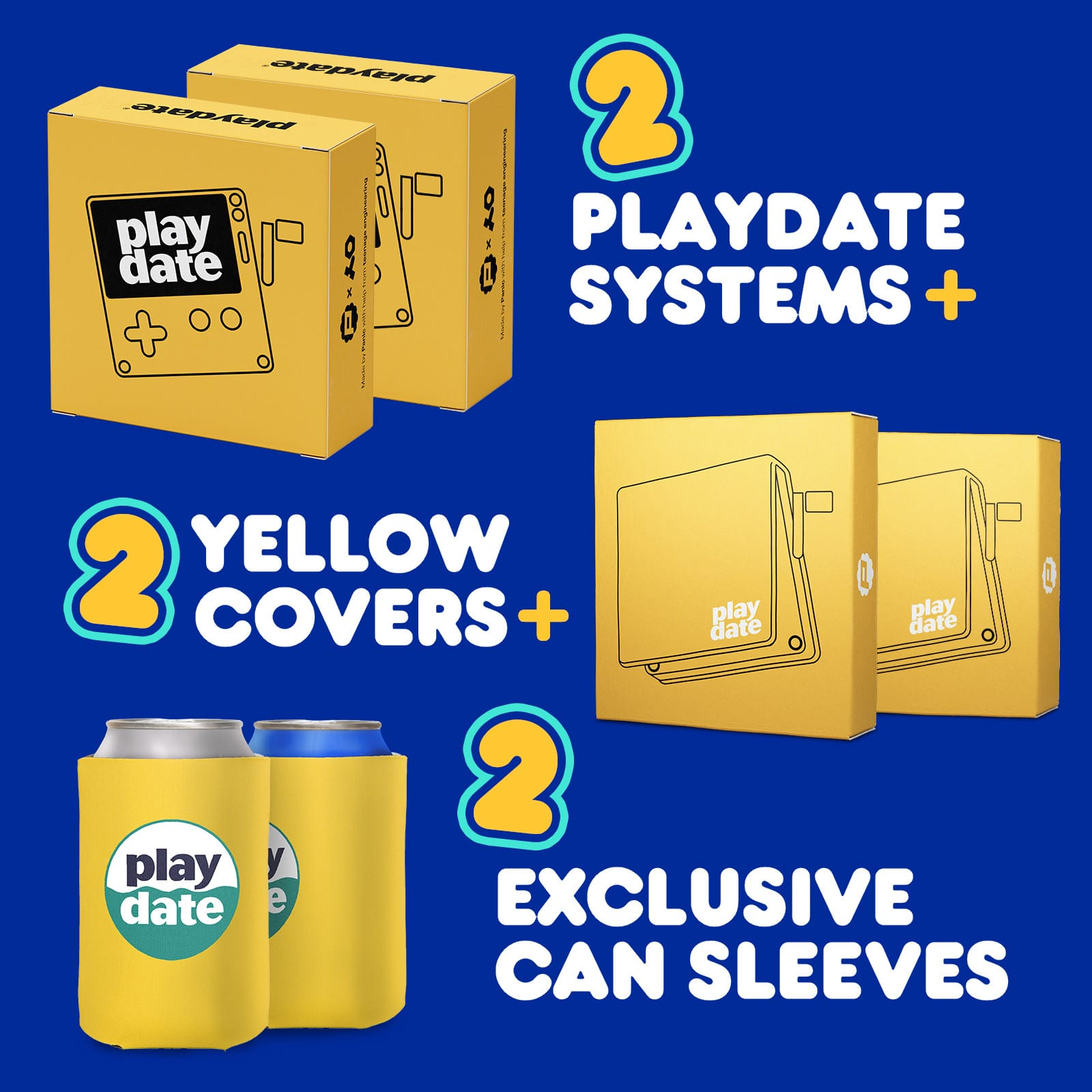Playdate Season 2 review - Part 2
Welcome back to our coverage of Playdate Season 2! In Part 1 of our review we discussed Fulcrum Defender, Dig Dig Dino!, Wheelsprung, The Whiteout, Otto’s Galactic Groove!!, Long Puppy, and even Blippo+, the included bonus app that’s not really a game. Now for Part 2, we’re starting right from where we left off, with the two games introduced in Week 4. Let’s get cranking!
Week 4
Well, here we go again with another fun game that really only works on the Playdate. CatchaDiablos is a topdown action game about catching monsters by snaring them within circles of salt you draw on the ground. There’s a wide variety of monsters—which are more properly called “Diablos”—to encounter and catch, each with its own pattern of movement and (potentially) attack. Each Diablo also has their own entry in your Pokédex “Diablory”, an index which fills out as you progress through the game.
The game’s controls are built around using the crank and are very unique, especially in the way your player character will always move in a circle. Let me try to explain this as succinctly as possible… A circle indicator appears directly in front of the player. Turning the crank rotates the direction the player is looking, which moves the circle indicator toward that direction, and it has a full 360 degrees of motion. If you hold down one of the face buttons—or any direction on the D-pad—your character will begin to pour salt on the ground. While in this salt-pouring mode, rotating the crank will make your character walk, following the path which the circle indicator layed out, leaving a trail of salt behind. Your player’s movement will follow the travel of the crank; meaning that if you stop rotating one way and instead start cranking in the opposite direction, your character will move back along the circle in the reverse direction. Trace a full circle of salt on the ground and it will activate, capturing any Diablos caught within its perimeter as it disappears.
Well it’s now dawning on me that this all sounds super confusing, and I probably shouldn’t have even tried to explain the controls in so much detail. Because, strange as this may sound, the controls in CatchaDiablos are actually super intuitive and you get used to them very quickly. Much like with Long Puppy, after a brief amount of time playing the game, it’s quite easy to adapt to its unique crank + button input scheme. It really does work quite well.
Since this game features semi-random monster generation and permadeath—meaning that you get sent back to the very beginning when you lose—many will call it a “roguelike”. Personally I’d rather not use that label, as I kind of feel that the descriptor has been overused to the point of meaninglessness…but the shoe does fit well enough, I suppose. The developers themselves describe the game as being “like The Binding of Isaac meets Vampire Survivors meets Pokémon”.
Speaking of the developers, CatchaDiablos is the latest game from Amano, the two guys (Mario and JP) who had previously made the excellent puzzle platformer Pull Frog. (You can read our review of Pull Frog Deluxe here.)
They had been hard at work on a different game—a pinball game!—when they heard Playdate Season 2 was actually going to happen. Instead of rushing to complete their current project in time for Season 2, they opted to pause that project to create an original game instead. The upcoming pinball game had already been revealed to the public, and they felt that a Season 2 game should really be a complete surprise for players. And thus CatchaDiablos was born.
This game now serves as a prequel to Amano’s upcoming game, Devils on the Moon Pinball. Since the two games were developed in tandem and share some of the same assets, it makes sense that they would be part of the same world and be inhabited by many of the same cast of devilish characters. It also sounds like DOTMP will be fairly similar to Pokémon Pinball on the Game Boy Color, in that you’re trying to catch all the monsters by playing pinball.
Regarding the art and aesthetics, CatchaDiablos has a cool occult look, impressive pixel art, and a charming cast of cartoony monsters. It’s an Amano game, so you know the vibes will be on point. In terms of gameplay, I also think the novel control scheme works quite well, and I could see players getting really into it, especially with its gotta catch’em all aspect. However, I don’t think the Pokemon Survivors gameplay is really my thing. Like it’s reasonably fun to play in short bursts, but I don’t find myself wanting to do another run after dying that often.
That said, “good for playing in short bursts” is kind of the ideal descriptor for a portable, handheld video game. And who knows, maybe after giving it a spin enough times, I too will be hooked. It definitely worked for Spelunky.
Shadowgate PD is the official Playdate port of the classic point-and-click adventure, which was originally developed by ICOM Simulations and published in 1987. This new handheld version was created by Pixel Ghost using Pulp, Playdate's own development platform, and aims to be the definitive version of the game for a new generation.
Right from the jump, it was clear to me that a lot of love and dedication went into this handheld port of Shadowgate. But wow, man…I think I kind of hate it.
As mentioned in Part 1, point-and-click adventure games are really not my thing. Growing up a console and handheld game player, I had limited exposure to the hot computer games of the era. And as such, I never gained an appreciation for some of the genres that had been popular on PC. Case in point, I never did play Shadowgate back in the day. In fact, I didn’t even play the NES version, nor Shadowgate Classic on the Game Boy Color, nor the N64 game. It simply never crossed my path.
But here and now, with Playdate Season 2, I finally have my chance to experience the legendary point-and-click adventure…on a 400 × 240 monochrome screen. And yeah, I’m sorry, but I’m not feeling it. Trying to survive Castle Shadowgate is just a total slog.
And look, I really wanted to like this game. I have heard the name “Shadowgate” evoked reverently in the past, and the prospect of tackling this adventure—even using an archaic interface on a tiny screen while having to work with only two buttons…and a crank—sounded like a fun challenge. Hell, I even pulled up a Shadowgate guide online, at one point to literally walk me through it. (Which it turns out, works extremely well, because this game really is quite faithful to the original.) But even using that crutch, I don’t think I have the patience to work my way through it.
Unfortunately playing Shadowgate on the Playdate means that the visuals are about as compressed as you possibly make them. If you were already familiar with the game then the lack of visual fidelity might be more quaint than a nuisance. For the uninitiated, on the other hand, it makes a hard game even harder. Small details are genuinely difficult to parse. Then on the audio side, the music is also pretty bad. The loops are quite short, with the same melodies repeating too often, so the tunes quickly become grating.
Honestly, I gave it my best shot, but Shadowgate PD simply isn’t for me. And that’s ok. I’m sure there are plenty of folks out there who will welcome a return to Castle Shadowgate, even rendered on a black-and-white handheld. One thing we can still all agree on though, the skeletal face of the Grim Reaper on this game’s death screen is just as METAL as it gets.
Week 5
Tiny Turnip is a full-on metroidvania in which you traverse the world using left hand/right hand climbing mechanics very reminiscent of DK: King of Swing on the Game Boy Advance. You play as a sentient turnip with dreams of reaching the stars, who has been magically granted a pair of arms in order to climb out of the ground and into the skies. And climb you will!
The sprawling game world features plenty of traps and unique platforming challenges with visual aesthetics that very much remind me of Celeste. Especially with the inclusion of stars as an optional collectible item, this game feels as though it’s paying homage to Celeste’s strawberries. The main macguffins you are seeking are four crystal vegetables, but the game tells you that the stars are just for collecting if you want a challenge. The music in Tiny Turnip, while not particularly expansive, is also extremely cool and compelling; and this too made me think of Celeste.
In true metroidvania fashion, you unlock new skills along the way, which then allow you access new areas. In this case, you first learn to pull your arms in and roll along the floor, morphball style. Eventually you learn how to dive down and swim through water, instead of just floating on the surface like some buoyant little rutabaga. It’s the classic Metroid formula, but seen through a quirky vegetable-tinted lens.
In terms of gameplay, while Tiny Turnip is immensely playable, I must admit that the controls took some getting used to. It’s a bit weird to switch between different actions (climbing, rolling, swimming, jumping), especially when using the D-pad to shift modes. Moments where you need to preserve your turnip’s momentum to vault through the air—by hitting the A Button mid-swing and releasing your grip—initially felt rather unintuitive and intimating. But after playing around with the game a fair bit, the physics-based challenges become perhaps the most enjoyable element.
Tiny Turnip was developed by Luke Sanderson, who had previously created the game Paper Pilot. The music is by Isabelle Chiming and you can find the soundtrack on bandcamp. Just to reiterate, the music here is absolutely top-notch, just perfect this type of exploratory adventure. The Hub track in particular has a couple little flourishes that sound almost Japanese to my ears and made me immediately think of Heiankyo Alien (which we recently covered in a retro review). So good!
Interestingly, it seems that Tiny Turnip is a scaled-down Playdate version of Sanderson’s upcoming Steam game called Turnip Mountain. Described as a “twin-stick climbing platformer”, Turnip Mountain will clearly utilize more complex input options afforded by a modern controller, which simply isn’t possible on the Playdate. It also has a demo available, so maybe check it out if you’re interested.
To be honest, I was surprised by the genuinely high quality of Tiny Turnip. This game rules and it’s extremely close to being my single favorite title of Season 2. The traversal mechanics, the interconnected game world, the quirky visual aesthetic, the stellar soundtrack, even the innovative use of the crank—all these elements come together to make one hell of an entertaining package. You can’t help but love it.
Chance's Lucky Escape is another point-and-click adventure, but this time it’s a comedy! The game is not only lighthearted, it’s also quite brief, with just six quick chapters to zoom through. And while Playdate games are often bite-sized experiences, this one feels particularly slight. I think it only took around 20 or so minutes of playtime before I saw the credits roll. Perhaps because this is a narrative adventure, the shorter length is more noticeable. Although, they do say that brevity is the soul of wit.
Short though it may be, Chance's Lucky Escape is actually quite funny. Even though point-and-click adventures aren’t really my thing, I certainly didn’t dislike playing it. Basically the titular Chance is blessed with unbelievably good luck, and—despite being a completely incompetent criminal—he always manages to bumble his way out of a jam through sheer dumb luck. His extreme good fortune begins to feel to the player like a superpower; as if there is no way to lose this game, even if you tried.
The way the game subverts your expectations by leaning into Chance’s super luck through a gag or two each chapter is really quite charming. You’ll think you need to use a particular item for something, only to see Chance fail at the task so hard that he ends up in a better position than where he started. It’s also a pretty good joke that—despite all the different items you encounter throughout your journey—the hammer from the very beginning of the game works for almost everything. That dumb hammer gets funnier every time you use it.
So yeah, Chance's Lucky Escape is a brief comedy game sporting some decently funny gags. It’s a nice little narrative adventure with charming characters that you can complete in one sitting. And while it may not be an epic journey, it certainly doesn’t wear out its welcome either.
Week 6
Taria & Como is a puzzle platformer built around swinging instead of jumping. When Season 2 was first announced and we got a sneak peak of what to expect, this was the game that most caught my attention. Granted, they didn’t show us much of anything at all, but the key art and swinging gameplay of this title looked refreshingly original. So for me—and presumably many others—Taria & Como was a big selling point of the bundle.
This was also one of only four games (along with Fulcrum Defender, Dig Dig Dino, and Shadowgate PD) to be included in the Season 2 press kit and have its game page accessible to the public ahead of the official release date. This meant we could scope out the details on who made the game ahead of time and see if we recognized any of the developers. And boy was I surprised by what I found! Because for a little indie title on a niche handheld platform, this game names a lot of people in its credits.
As it turns out, Taria & Como was produced by Viola Davis’s company, JuVee Productions. So Viola Davis—yes, the famous actor—is listed in the credits as an executive producer, along with her husband, Julius Tennon. The main creative force behind the game appears to be LA-based artist Kip Henderson, since he is credited as Writer/Director, Producer, Lead Artist, and even Level Design. Henderson appears to be a particularly inspiring individual, as he is disabled but still manages to make a living as a working artist. His art is also pretty darn good! A second artist, Reginald Roquemore, is also credited for Additional Art.
On the audio side, you have Jesse Haugen and Jonathan Richmond credited for Music and Sound Design respectively, plus Audio Mixing by Super Sauce Audio, who it turns out are two engineers named Jordan and Jason. More surprising than all the J-names however, is that there’s a single credit for Cello (Isaiah Gage). I can’t remember the last time I saw a video game credit their cellist individually, so that’s pretty rad. Interestingly, unlike other indie game scores, you cannot get Haugen’s Taria & Como soundtrack on bandcamp. Instead you have to get this Playdate game’s music from the larger corporate outlets, such as Spotify, Apple Music, Amazon Music, Tidal, or—and this is not a joke—iHeartRadio.
The actual credited developer for Taria & Como appears to be César Dominguez Garcia, who is also credited for Level Design. One would assume that Garcia did most of the heavy lifting (in terms of software) to create the actual game. However, I find it rather odd that he’s not one of the six people credited for Prototype Development. Perhaps he was brought in specifically to build a game that was already designed and prototyped, like a mercenary coder?
One final mystery about this game is that it’s supposed to be a co-production by Popseed Studio Inc and JuVee Productions. While we know that JuVee Productions is Viola Davis’s company, I can’t find any information on Popseed Studio whatsoever. My theory is that it’s probably Kip Henderson’s company, although the name isn’t mentioned anywhere on his website, so I can’t confirm that’s actually the case.
Storywise, the game pits our sister heroes, the titular Taria & Como, against an evil corporation that has abducted their parents. The first two chapters are mainly tutorial stages to acclimate players to the game’s unique controls and mechanics. Then by Chapter 3, the premise takes a more Portal-esque direction, with Taria trying to escape a corporate-run medical facility whilst being passive-aggressively nagged by a manipulative AI who wants to keep her captive.
The evil corporation in this game is named Toxtum Inc., and interestingly in this case, they are said to be a video game company…who makes games you play with a crank. This almost seems like a subversive jab, poking fun at Panic through a game on their own platform, except that Toxtum bears basically no resemblance to Panic whatsoever. The only reason Toxtum’s games are played with crank in the first place, of course, is because this game is on the Playdate. Judging by the text, Toxtum appears to be more of a criticism of health care companies, with perhaps a critique of social media manipulation thrown in for good measure.
Taria & Como really shines in its aesthetics, particularly art and music. All of the character portraits and cinematic images delivered through comic book-like Panels are excellent, clearly defining each character with real personality. The music is nicely atmospheric, with some genuinely beautiful cello work (in case you were wondering if that Cello credit was warranted). The story and characters feel very thoughtfully put together, and it seems like a lot of love went into this project.
In terms of gameplay though, I feel like Taria & Como is kinda just alright. The grappling hook style movement is cool and distinctive, but getting around in the world feels rather awkward. And too slow! Even after getting used to the controls, movement in this game continues to generally feel pretty stiff and certain actions, like firing the grapple or even Taria’s walking speed, are just painfully slow. I have to wonder if the reason for sluggish movement is intentional—Taria does have a prosthetic leg after all, so one could argue that difficult movement is thematically consistent—or simply a result of hardware limitations. Unfortunately, I suspect it’s most likely the latter; especially since slow movement doesn’t make the game any more fun.
Also, as far as I can tell, the game doesn’t seem to be optimized very well. The frame rate generally appears to be on the low side much of the time, and then it drops considerably when the game tries to load up the next area. Which is not to say that the game is unbearably slow or that frame rate issues make it unplayable. The puzzle-like design of each level doesn’t put any time pressure on the player, so you can take as long as you need to make your way through, However, I think this title may be pushing the limits of what the Playdate can gracefully pull off.
All in all, Taria & Como is a cool puzzle platformer focused on telling a story through laid-back exploration with a grappling hook. The aesthetics are great, even if the gameplay comes off a bit lethargic in its execution. It’s not really the killer app we were hoping for, but it’s still a worthy inclusion for Season 2.
Black Hole Havoc is a single-screen action puzzle game where the objective is to clear the playfield of all black holes by hitting them with another black hole of a similar size. The game was made by Cosmic Bros, a three-man team consisting of Programmer Drew Loebach, Lead Artist Antony Saillard, and Karim Chair handling both Animation and Music. Loebach previously made the Playdate game Jolly Chimp Champ, and apparently is currently working another game (with another team) called Comet.
Black Hole Havoc’s gameplay involves growing a black hole of the appropriate size at your cannon, centrally located at the bottom of the screen. With the default controls, the A Button grows the object larger while the B Button shrinks it down. You aim the cannon by pressing Left and Right on the D-pad, which moves the angle of fire from the cannon’s central position. Then pressing Up on the D-pad shoots the object at whatever angle your cannon is currently pointing. While the goal is to hit your targets with an accurate shot, the projectile you fire also needs to be about the same size as the target it hits, or you will take damage and (potentially) fail the level.
The general setup is fairly similar to Puzzle Bobble (aka Bust-A-Move), although notably without that game’s color-matching element—here you are matching the target’s size. The gameplay is also reminiscent of Gimme Friction Baby, a 2007 flash puzzle game created by Wouter Visser. (Ironically, we actually mentioned the Gimme Friction Baby Playdate Tribute game in our first post of Playdate game reviews.) Notably though, the goal here is to shoot circular targets (black holes) with circular projectiles of variable size (also black holes) and match the size of the two objects as closely as possible, and that sizing element feels quite original.
BHH has a sketchy/hand drawn, guerilla art style and a world is populated with faceless cartoon people that are far too expressonate to call mere “stick figures”. This aesthetic, along with the game’s liberal use of video game, movie, and internet meme references in its cinematic cutscenes, lend it the vibe of a Newgrounds flash game from 2008 or so. Speaking of the cutscenes, they are very well animated and often quite funny, which came as a welcome surprise. This is one of the few Season 2 games—or even just recent Playdate titles in general—to animate its own cutscenes instead of using the comic book-styled Panels by Cadin Batrack. (Seriously, the number of Playdate titles using Panels these days is way too long to even try and list.)
The cinematics in this game are legitimately impressive and add a lot to the overall package. Case in point, the Story mode’s second set of levels take place in an Intergalactic Train Station and the cinematic which introduced this area had me laughing out loud. Basically your heroes are shocked to find the place is not only inundated with black holes, it is crawling with annoying Space Tourists. While I was initially unsure about the comedic elements of BHH going in, this one cutscene immediately won me over.
While a puzzle game like this would generally only need an arcade mode, Black Hole Havoc includes a Story mode that spans…(checks notes)...80 levels?! Every group of 10 or so levels are set in a different location—Space Metropolis, Intergalactic Train Station, Jungle Planet, Ice Moon, etc.—and new elements get added to complicate matters. For example, black holes that grow as the level progresses adds some time pressure, Space Tourists appear as objects you need to avoid, a gradually collapsing ceiling that forces you to clear targets before they get too low for your cannon to hit, or ice blocks that your black holes can bounce off of.
Various collectible objects appear in certain places in the Story mode, after which they can be viewed in the Gallery menu. The first of these to appear is basically the UFO from Space Invaders. Shoot these objects with a black hole to collect them. But you have to act fast, as some of them will fly off the screen soon after they appear.
On the accessibility side, BHH offers configurable controls and an Aim Assist option. It’s worth noting however that enabling Aim Assist means your high scores cannot be submitted to online leaderboards. The game also makes fun of you for using Aim Assist, requiring you to check a box labeled “I’m a n00b” to enable it.
The game also features a “To-Do” list of achievements, with entries like “Clear Arcade level 10” and “Unlock all cutscenes”. The last item reads “Enter code @ title screen”. So I did what any video game enthusiast in their 40’s would do and it worked, resulting in a “Bronami” title screen joke. Very good stuff.
Black Hole Havoc is another delightful surprise and perfect inclusion for Playdate Season 2. Not that it’s a competition or anything, but this action puzzler just jumped up near the top of my rankings for the bundle. It delivers a unique gameplay experience wrapped in a stylish cinematic presentation that is frankly much higher quality than it needed to be. Definitely recommended.
Wrapping Up…
So that’s that! All 12 games of Playdate Season 2—and the bonus Blippo+ app—played and reviewed here for your reading convenience. It’s been a quick six weeks, but the memories we’ve made will last a lifetime…presumably. I hope you’ve enjoyed this endeavor as much I did.
And hey, to celebrate its release of Season 2, Panic is currently offering a Playdate Summer Bundle with some distinctly 2-centric theming. You can get two Playdates, two yellow covers, and two beer koozies can covers for $449. So forget about that Switch 2, you can get yourself two Playdates instead.
Finally, we reviewed each of these games individually, but I realize people are busy and some folks probably don’t want to read through the whole two-part review. With that in mind, I’ve put together a TL;DR version below. If you’re mainly curious as to what’s hot and what’s not, please see the list below ranking each title by its fully subjective—yet indisputably accurate—quality as a handheld video game.
Playdate Season 2 Rank List
Dig Dig Dino!
Tiny Turnip
Black Hole Havoc
Fulcrum Defender
Long Puppy
CatchaDiablos
Otto’s Galactic Groove!!
Taria & Como
Chance's Lucky Escape
The Whiteout
Wheelsprung
Shadowgate PD
Blippo+
Happy Gaming friends! Stay safe out there.


